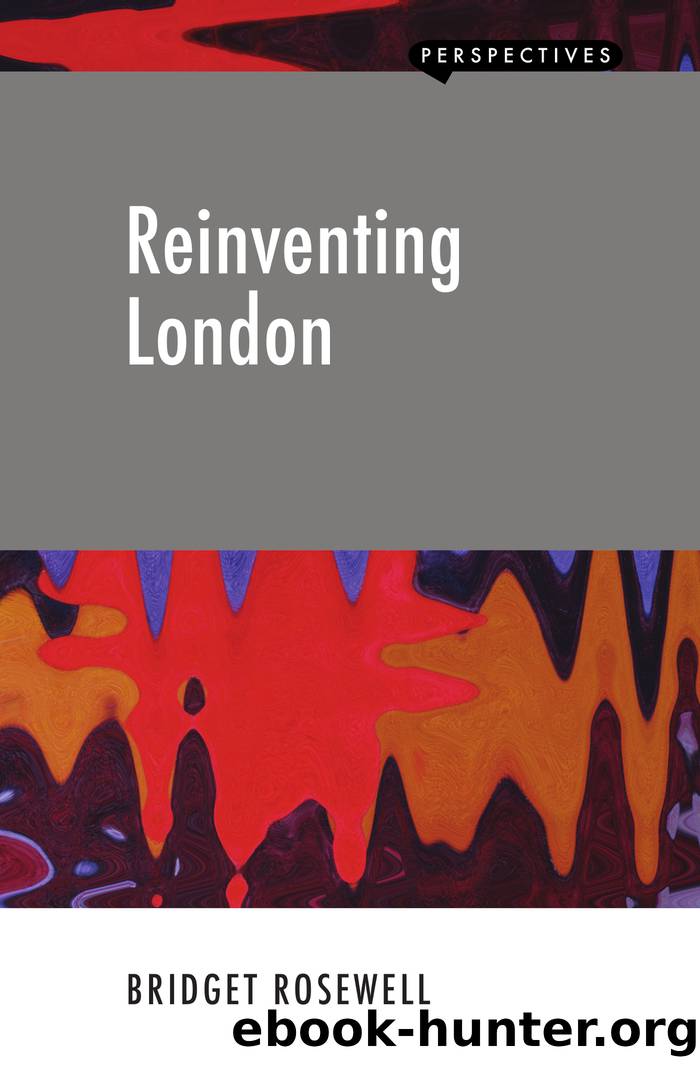Reinventing London by Rosewell Bridget;

Author:Rosewell, Bridget;
Language: eng
Format: epub
Publisher: London Publishing Partnership
Published: 2013-12-18T00:00:00+00:00
People and place
The interplay between people and place is at the heart of the city. It provides a central dynamic to what London is about, and it is mediated through the quality and the quantity of the built environment. London no longer has its nineteenth-century slums: some were bombed, some were demolished post war. The tiny brick cottages still seen across much of the erstwhile industrial North barely exist in London. To recreate the locations for the BBC series Call the Midwife, they used Chatham Dockyard: a historic location, preserved but not lived in. On the other hand, the locations for Made in Dagenham, the film about the fight of women for equal pay in the Ford car plant, were at least partly in the same estates (the Mardyke in Havering) in which the women of the time were living. Call the Midwife is about the 1950s, while Made in Dagenham is about events a decade later. Even so, the factory has now disappeared and a Hoover factory in Wales, going through closure, was used as the factory location.
Low-quality housing in London is more likely to be in poor tower blocks and 1960s maisonettes, built to low standards and with inferior facilities, than in nineteenth-century housing. Even where this was badly built in the first place, the middle classes have come along and shored it up.
The post-war vision of garden cities required the (close to forcible) relocation of the poor to new places, to which the jobs would also be moved (also forcibly). Even in the 1970s it was necessary to have an Industrial Location Certificate to establish a new factory. But it did not work. The garden cities are not full of people walking to work. They are full of people walking to the station to commute to London, just as the villages of Surrey where I grew up had become dormitory towns for an earlier generation.
The new train lines we are currently building can create new opportunities to build liveable houses near the stations, but it is not at all clear that the planning system takes such opportunities into account. Neither, of course, does transport planning take development opportunities into account, but that is a matter for the next chapter.
Creating places in which people want to live is not the same as creating places in which people want to work. Nor do planners always grasp that what people want might subvert the plan. Patrick Abercrombie was the architect of the post-war London plan that saw the establishment of the Green Belt, the establishment of new towns outside it, and the vision for ring roads and radial routes. This vision has been undermined by the changing economic environment, the production technologies that made cars available to all, and the changes in family life that made it possible for women to go out to work.
The built environment â buildings and their arrangement â needs to be flexible. This is just as important as a flexible economic environment. As needs change, so too must the response.
Download
This site does not store any files on its server. We only index and link to content provided by other sites. Please contact the content providers to delete copyright contents if any and email us, we'll remove relevant links or contents immediately.
Spell It Out by David Crystal(35849)
Life for Me Ain't Been No Crystal Stair by Susan Sheehan(35536)
Cecilia; Or, Memoirs of an Heiress — Volume 1 by Fanny Burney(32064)
Cecilia; Or, Memoirs of an Heiress — Volume 3 by Fanny Burney(31459)
Cecilia; Or, Memoirs of an Heiress — Volume 2 by Fanny Burney(31409)
The Great Music City by Andrea Baker(30784)
Professional Troublemaker by Luvvie Ajayi Jones(29422)
We're Going to Need More Wine by Gabrielle Union(18636)
Twilight of the Idols With the Antichrist and Ecce Homo by Friedrich Nietzsche(18303)
The Secret History by Donna Tartt(18168)
Cat's cradle by Kurt Vonnegut(14763)
All the Missing Girls by Megan Miranda(14748)
Pimp by Iceberg Slim(13781)
Bombshells: Glamour Girls of a Lifetime by Sullivan Steve(13689)
Fifty Shades Freed by E L James(12918)
Talking to Strangers by Malcolm Gladwell(12881)
Norse Mythology by Gaiman Neil(12836)
The Social Justice Warrior Handbook by Lisa De Pasquale(11956)
Underground: A Human History of the Worlds Beneath Our Feet by Will Hunt(11840)
